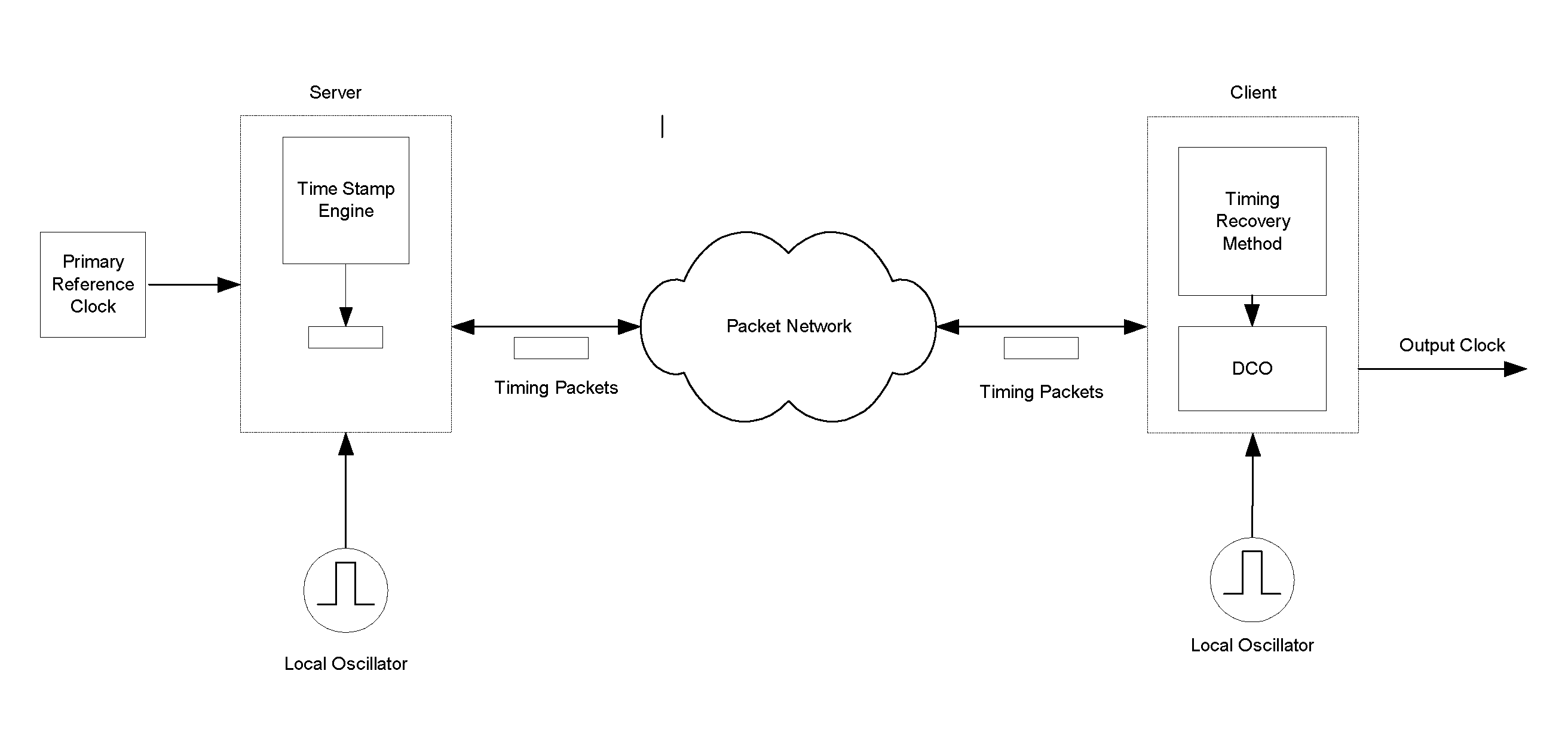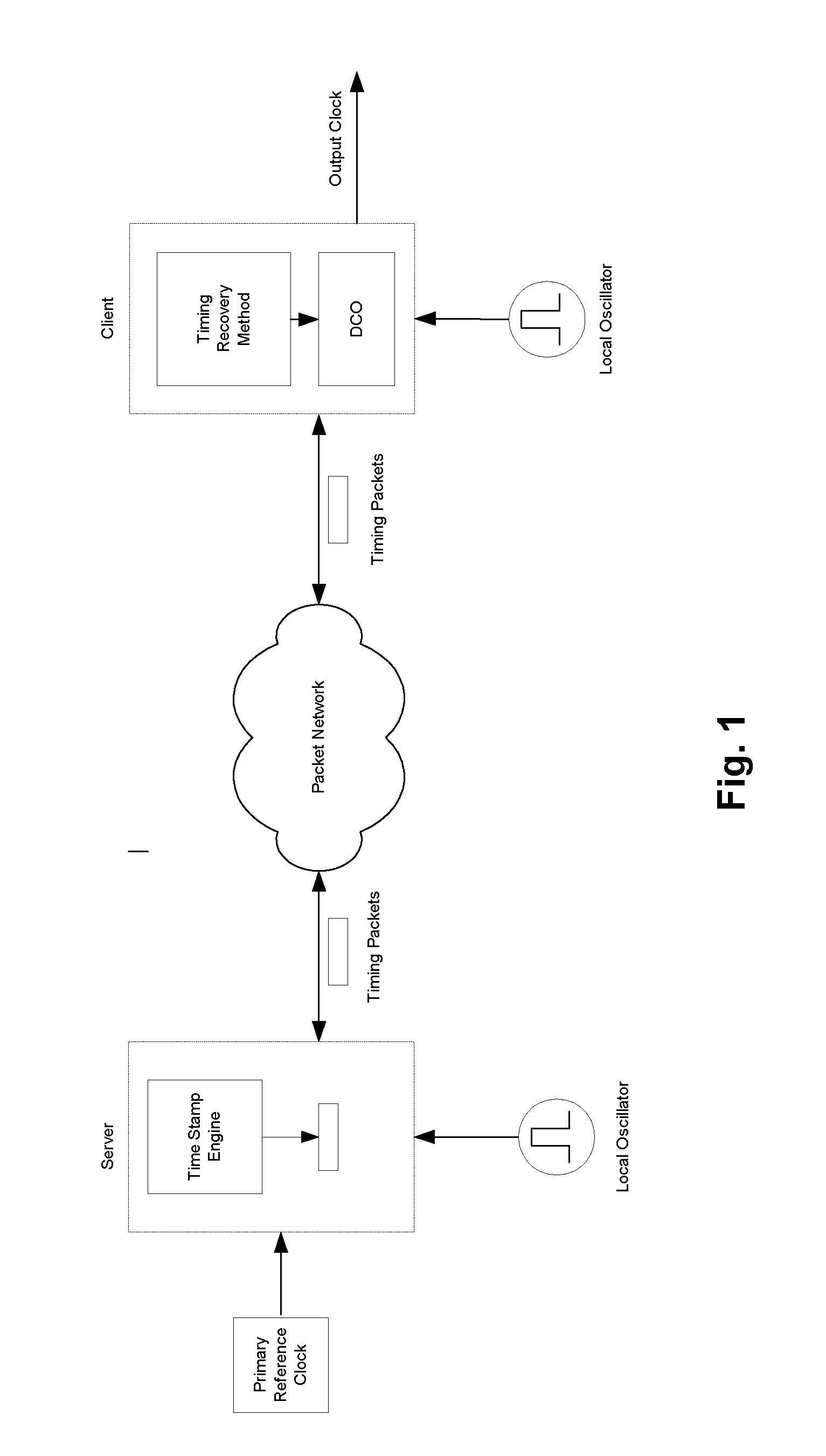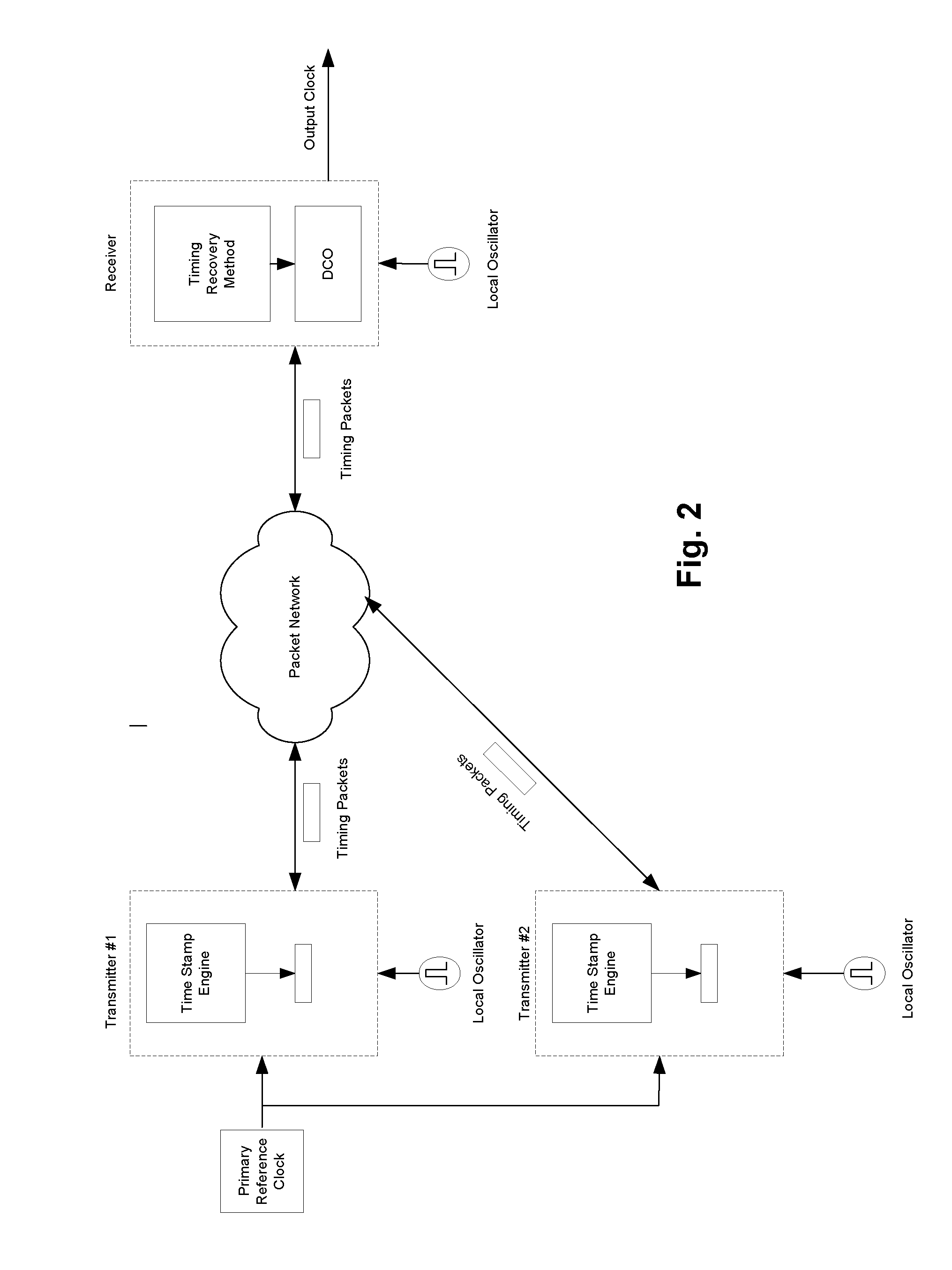Multi input timing recovery over packet network
a timing recovery and multi-input technology, applied in the field of packet network, can solve the problems of inability to accept many applications, and high level of jitter and wander of recovered reference clocks, so as to improve the estimate of delay, improve the reliability of packet impairment, and improve the effect of time-consuming
- Summary
- Abstract
- Description
- Claims
- Application Information
AI Technical Summary
Benefits of technology
Problems solved by technology
Method used
Image
Examples
Embodiment Construction
[0018]In the following description k is index to packet number, xj(k) represents transmitter time stamp for timing packet k, and timing packet stream j, yi(k) represents receiver time stamp for timing packet k and timing packet stream j, zi(k) is the raw delay estimate between transmitter and receiver for timing packet k and timing packet stream j, and ωi(k) is the filtered raw delay for timing packet k and timing packet stream j.
[0019]FIG. 3 is a block diagram of an embodiment of invention for the special case where there are only two timing packet streams from the same source and travelling over different paths, but it will be understood that the following description is applicable to the more general case of N timing packet streams.
[0020]For each stream j, raw delays (z(k)) are calculated by subtracting corresponding receiver local time stamps (yj(k)) generated by time stamp circuits 5000 from corresponding time-stamps generated by transmitter (xj(k)). The following can be writte...
PUM
 Login to View More
Login to View More Abstract
Description
Claims
Application Information
 Login to View More
Login to View More - R&D
- Intellectual Property
- Life Sciences
- Materials
- Tech Scout
- Unparalleled Data Quality
- Higher Quality Content
- 60% Fewer Hallucinations
Browse by: Latest US Patents, China's latest patents, Technical Efficacy Thesaurus, Application Domain, Technology Topic, Popular Technical Reports.
© 2025 PatSnap. All rights reserved.Legal|Privacy policy|Modern Slavery Act Transparency Statement|Sitemap|About US| Contact US: help@patsnap.com



